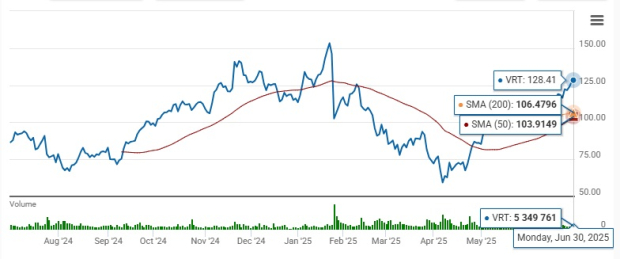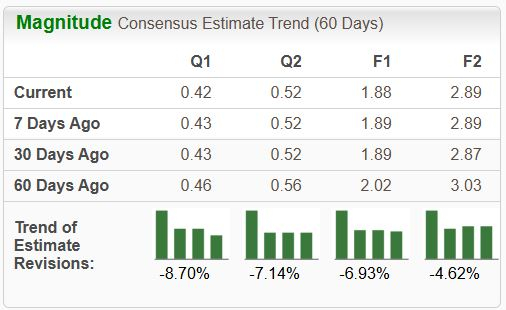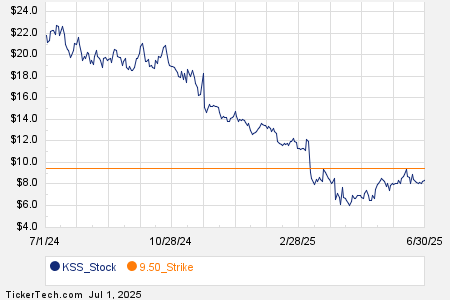Understanding Required Minimum Distributions: What You Need to Know
Tax-deferred accounts like traditional IRAs and 401(k) plans allow individuals to delay taxes on qualified contributions. However, the government eventually requires taxes to be paid. When account holders reach a specified age, they must take required minimum distributions (RMDs) each year. This means withdrawing a certain percentage from their retirement accounts and paying taxes on those amounts.
Continue reading to discover more about RMDs, including how to compute the withdrawal amount for a retirement account with a balance of $250,000.
Start Your Mornings Smarter! Get Breakfast News in your inbox every market day. Sign Up For Free »

Image source: Getty Images.
Age 73: New Standard for Required Minimum Distributions
A required minimum distribution (RMD) is the minimum amount that must be withdrawn from certain retirement accounts annually. RMD regulations apply to original account holders and beneficiaries of the following plans:
- Traditional IRAs
- SEP IRAs
- SIMPLE IRAs
- 401(k)
- 403(b)
- 457(b)
Roth accounts are exempt from RMD mandates while the original owner is living. Nonetheless, beneficiaries of Roth accounts must comply with RMD rules.
Generally, individuals must withdraw their RMDs by December 31 each year. However, the first RMD can be deferred until April 1 of the year following the individual’s first requirement to withdraw. The age at which RMDs commence has increased, as outlined below:
- Born After Dec. 31, 1950: Must start taking RMDs at age 73.
- Born June 30, 1949, to Dec. 31, 1950: Must start taking RMDs at age 72.
- Born Before July 1, 1949: Must start taking RMDs at age 70½.
Neglecting to withdraw the RMD by the deadline may lead to an excise tax of 25% on the amount not withdrawn, which can be reduced to 10% if the error is rectified within two years. If an individual can demonstrate that the shortfall was due to a reasonable mistake and can show corrective action is being taken, the penalty may be waived. To do this, individuals must file Form 5329 with the IRS along with a letter of explanation.
Timing Your RMDs: A Practical Approach
Individuals turning 73 in 2025 must ensure their first RMD is taken by April 1, 2026, while subsequent RMDs should be taken by December 31. Those who reach this age prior to 2025 are required to take their RMD by December 31, 2025. Failure to withdraw the required amount may incur substantial penalties.
While RMDs can be taken at any time during the year, it is typically wise to wait until December. By doing so, individuals can maximize the amount of time their money remains in a tax-deferred account. Additionally, since the U.S. stock market is performing below record levels, delaying RMDs until December could allow for potential market recovery.
Calculating the RMD for a $250,000 Retirement Account
The calculation of RMDs is fairly simple. Account holders first refer to the IRS’s Uniform Lifetime Table to select the life expectancy factor (distribution period) based on their current age. Next, the account balance from December 31 of the previous year is divided by this life expectancy factor.
Below is a portion of the IRS’s Uniform Life Table:
|
Age in Current Year |
Distribution Period |
|---|---|
|
73 |
26.5 |
|
74 |
25.5 |
|
75 |
24.6 |
|
76 |
23.7 |
|
77 |
22.9 |
|
78 |
22.0 |
|
79 |
21.1 |
|
80 |
20.2 |
Data source: Internal Revenue Service. Uniform Lifetime Table.
For example, Joe turns 73 in 2025 with a traditional IRA balance of $250,000 on December 31, 2024. His RMD for 2025 would be calculated as $250,000 divided by 26.5, resulting in $9,433.96. Since this is his first RMD, he can delay this amount until April 1, 2026, but all subsequent RMDs must be taken by December 31.
Consider Krista, who turns 75 in 2025 and has a traditional 401(k) with a balance of $250,000 as of December 31, 2024. Her RMD for 2025 equals $250,000 divided by 24.6, which amounts to $10,162.60. Krista needs to withdraw this amount by December 31, 2025.
Finally, Anna, who turns 77 in 2025 and maintains both a traditional IRA and a 401(k), with a balance of $250,000 each on December 31, 2024, must take RMDs totaling $250,000 divided by 22.9, leading to $10,917.03. This total must be withdrawn from both accounts by December 31, 2025.
Maximize Your Retirement Income with Social Security Strategies
If you are among the many Americans lagging in retirement savings, learning about little-known “Social Security secrets” can significantly enhance your retirement income.
One effective strategy could yield an additional $22,924 annually! By understanding how to maximize Social Security benefits, you can approach retirement with greater confidence and peace of mind. Join Stock Advisor to explore these strategies further.
Discover the “Social Security secrets” »
The Motley Fool maintains a disclosure policy.
The views and opinions expressed herein are those of the author and do not necessarily reflect those of Nasdaq, Inc.







